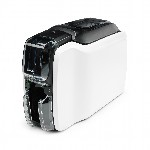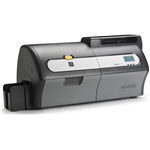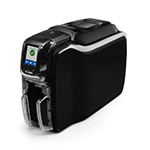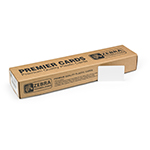- Free Shipping for orders over $249*
- +1 800-943-2341
- Aptika.ca
- Aptika.com
- Currency: CAD
- Français
My Account
Direct-to-Card or Retransfer: Which Card Printer Is Right for Your Application?
When you're choosing a card printer for your business, three factors will always be top-of-mind: print quality, speed, and cost. But other factors also come into play, including security features, card durability, and the ability to print on specialty card stocks. As you work through your options, one of the first decisions you'll have to make is what type of printer best meets your needs. So, let's take a top-level look at the card printer technologies that are widely available today: direct-to-card printers and retransfer printers.
First, the Basics
As you probably guessed, a direct-to-card printer prints directly onto cards. Most use a dye sublimation process that uses heat to transfer color from a ribbon onto the card stock, without using the transfer film that is used in retransfer printers.
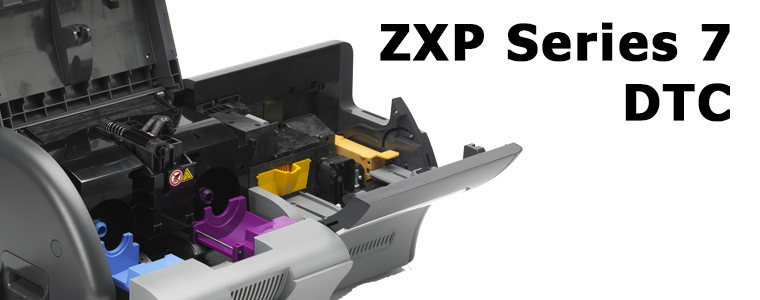
In general, direct-to-card printers are a lower cost option that also offers faster print speeds than retransfer printers. That is a combination that makes direct-to-card printers the first choice for many high-volume applications and situations where rapid output is a necessity.
Retransfer printers are slightly more complex; instead of printing directly onto the card stock, the image is first transferred to a clear retransfer film, which is then bonded to the card stock. Printing to a retransfer film provides several print-quality advantages, including sharper images with better color intensity and accuracy, and true “full bleed” coverage that lets you create cards that have true edge-to-edge images with no border.
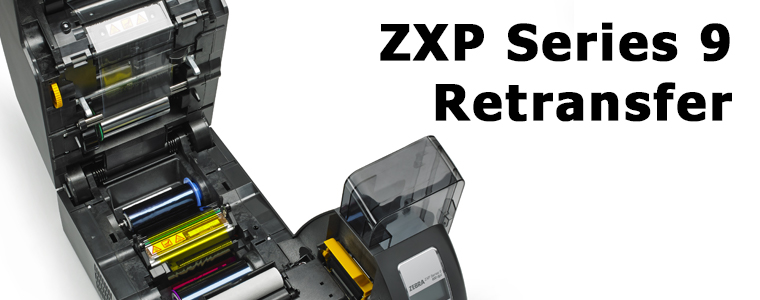
Additional Considerations
Retransfer printers are well suited to printing on specialty card stocks, including more durable, non-PVC-based cards and those with uneven card surfaces, such as key tags or smart cards. While these surfaces can prove challenging or impossible for direct-to-card printers, they're no problem for retransfer printers because it's actually the retransfer film that's being printed, not the card itself.
Retransfer printers also have a built-in durability advantage. When a retransfer film is permanently bonded to the card, it creates a durable, scratch-resistant surface without the need for any additional layers. Achieving a similar level of durability with direct-to-card technology will generally require the use of special laminates.
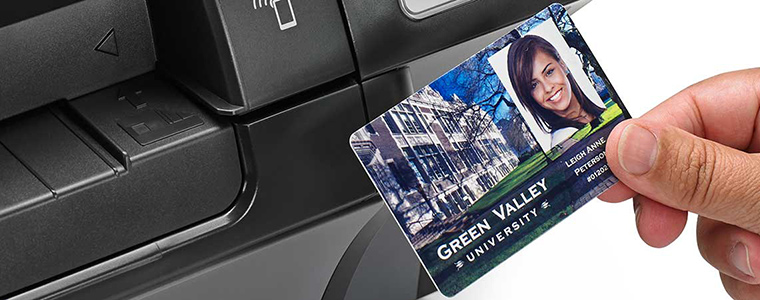
Another factor to consider is security. When retransfer film is thermally bonded to a card, it creates a tamper-evident layer that provides built-in fraud detection. That's an important consideration that often makes a retransfer printer the first choice for applications where card integrity and security are essential.
The built-in quality, durability, and security advantage offered by retransfer printers may make you wonder why anyone would consider a direct-to-card printer, but the reality is that direct-to-card printing is often the best choice for many applications.
First, direct-to-card printers can deliver significantly faster output. Zebra's market-leading ZXP7 direct-to-card printer can produce as many as 225 double-sided full-color cards per hour. That's about 25 percent faster than you can produce the same cards with Zebra's ZXP9 retransfer printer.
Second, while the image quality advantages of retransfer printers are undeniable, high-quality direct-to-card printers like those made by Zebra employ advanced printing technology that can achieve near-photo quality and border-free printing, which may be all that you require for your application.
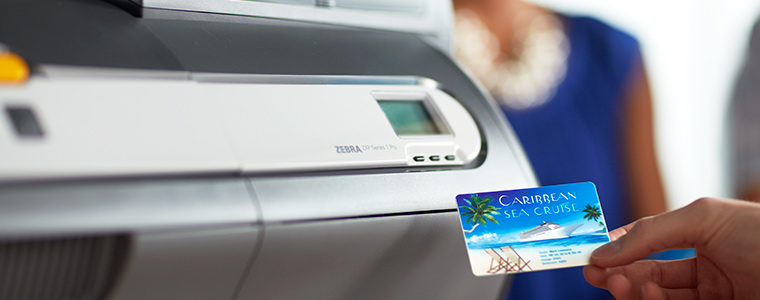
Finally, Zebra offers a wide range of ribbon and thermal transfer options, plus a full lineup of overlays and laminates that can be used to enhance the durability and security of cards produced on direct-to-card printers.
Of course, in the end, it often comes down to cost. When cost is the primary consideration, it's hard to beat a direct-to-card printer. You'll pay considerably less upfront and your cost per card will be lower. That's often the deciding factor if you don't absolutely need the advantages offered by a retransfer printer.
Aptika offers Zebra's full lineup of innovative card printers, with options for every application and budget. Whether you need student ID cards, high-security key cards, membership cards, or any other application, contact us today for help finding the perfect card printing solution.
May the 4th Be With You!
Tagged on: dtc, retransfer, comparaison, card printer
